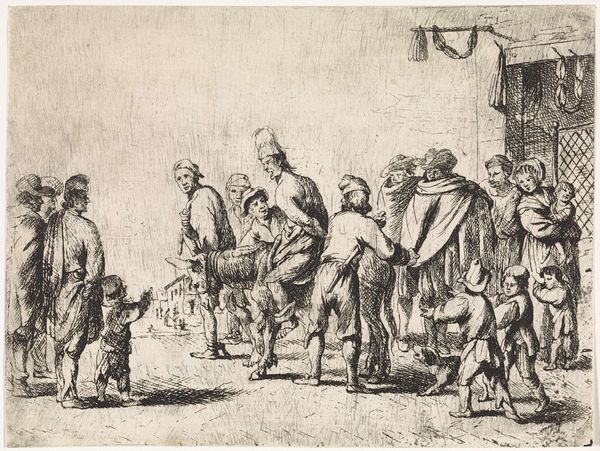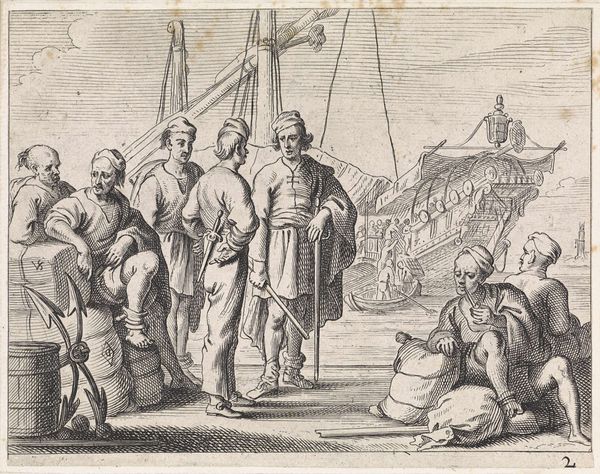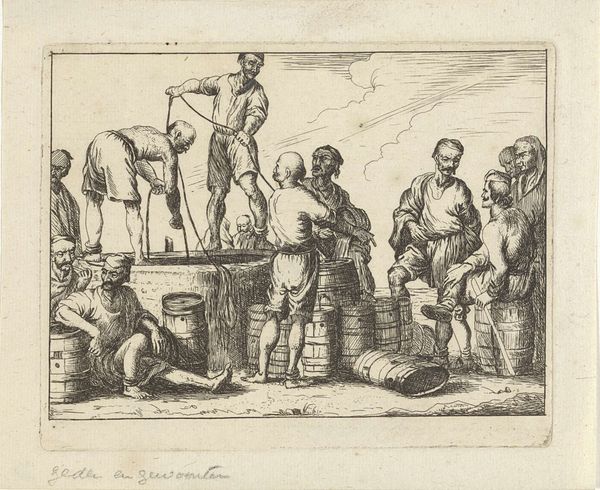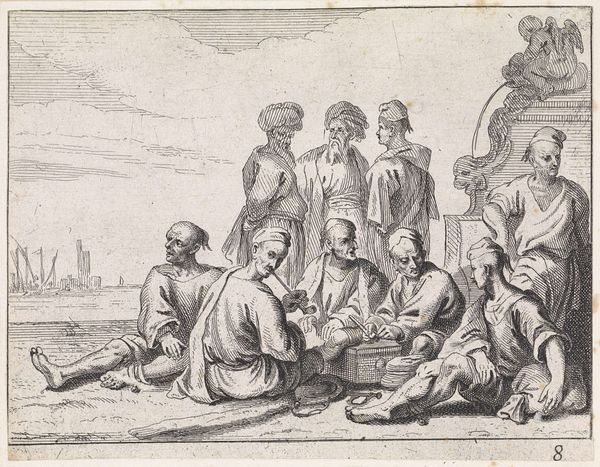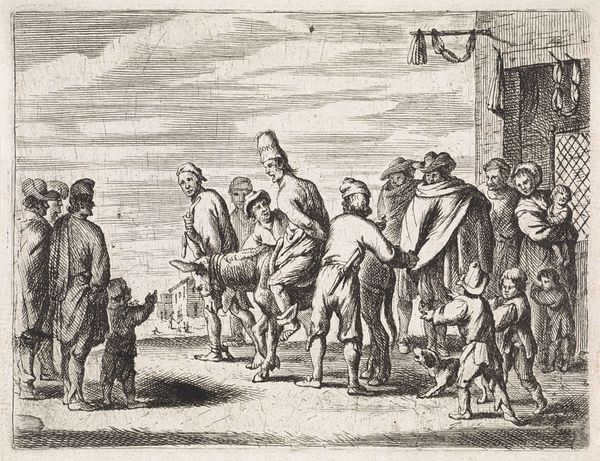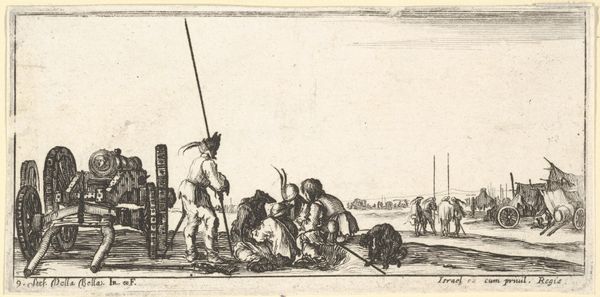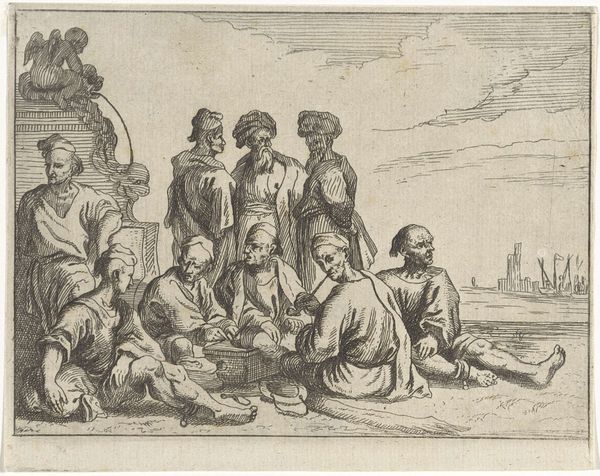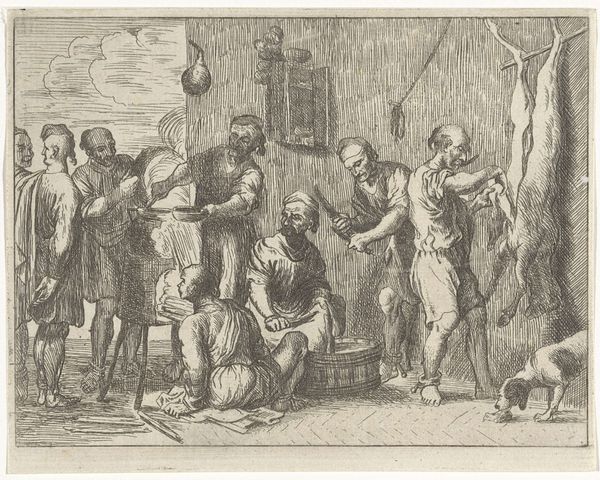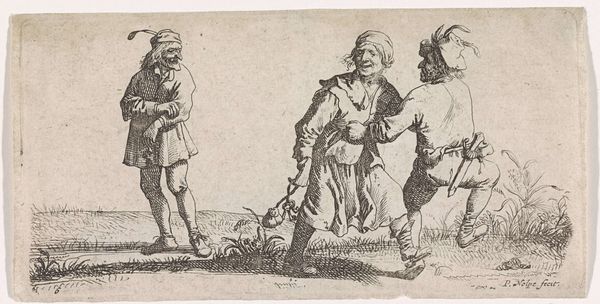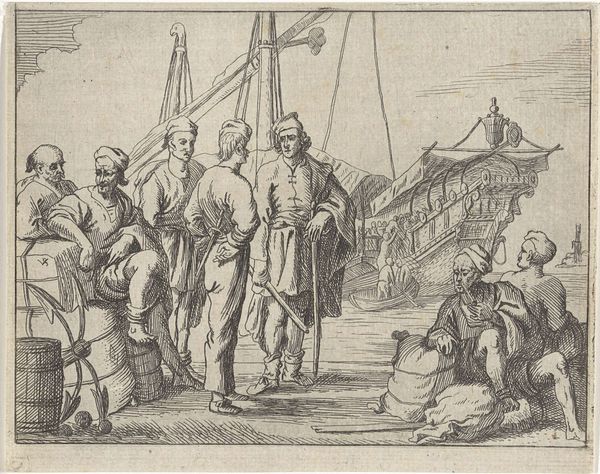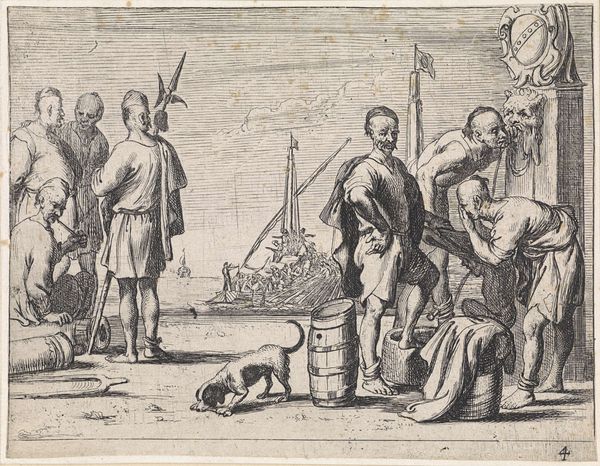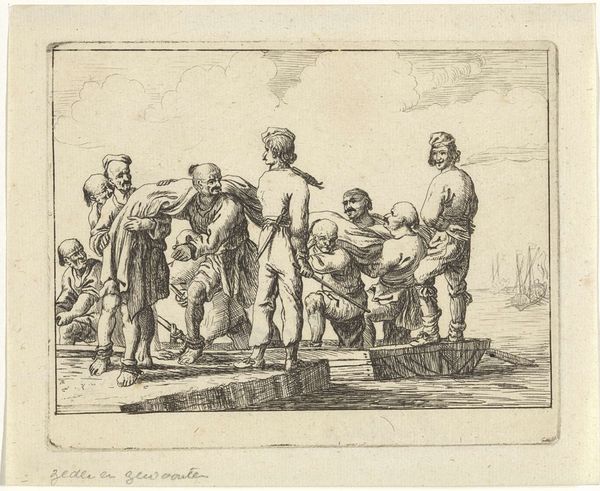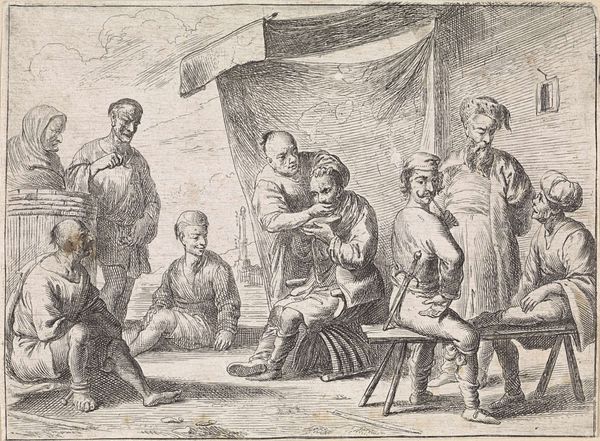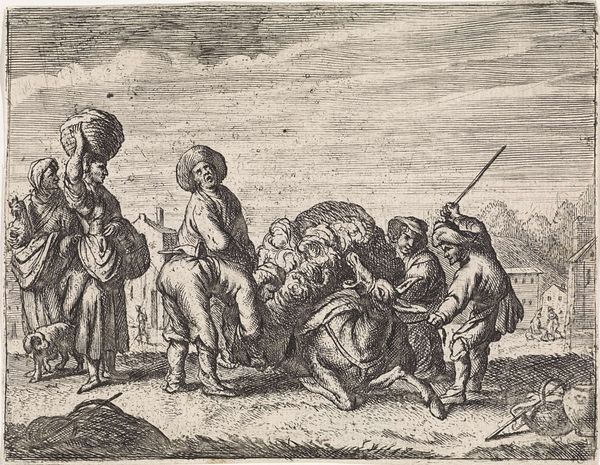
print, etching
#
narrative-art
#
baroque
# print
#
etching
#
figuration
#
genre-painting
#
history-painting
Dimensions: height 114 mm, width 146 mm
Copyright: Rijks Museum: Open Domain
Editor: This etching by Cornelis de Wael from 1647, titled "Islamic Galley Slaves around a Well," depicts a group of men laboring. It's a stark scene. What do you see in this piece, beyond the surface narrative? Curator: This print serves as a powerful historical document, revealing the entangled relationships between Europe and the Islamic world in the 17th century. The figures' bondage speaks volumes about the power dynamics at play and the economic exploitation inherent in maritime trade. But how does de Wael represent their cultural identities and humanity or lack thereof? Editor: It seems like there’s a distance. Their expressions are hard to read, but their labor is quite apparent. Is de Wael perhaps critiquing the system, or is he just representing a reality of the time? Curator: The question is crucial. De Wael’s artistic choices reveal a lot about the colonial gaze. Are these figures exoticized, dehumanized, or presented with any agency? Consider how his depiction may perpetuate stereotypes or challenge the status quo of the time, and the importance of us examining its meaning critically. Editor: So, we need to look beyond the image to understand its role in shaping historical perspectives of enslaved people and intercultural dynamics? Curator: Exactly. This work becomes an artifact for deconstructing the narratives of power, resistance, and representation. We must continuously contextualize such images, investigating how they contributed to forming historical consciousness and shaping policies towards marginalized groups. How do we ensure this etching prompts crucial conversations on representation? Editor: It’s eye-opening to think of this print as a point of departure for such essential dialogues. Thanks for illuminating these crucial contexts. Curator: My pleasure. Remember, engaging with art is about critically engaging with history and society.
Comments
No comments
Be the first to comment and join the conversation on the ultimate creative platform.
